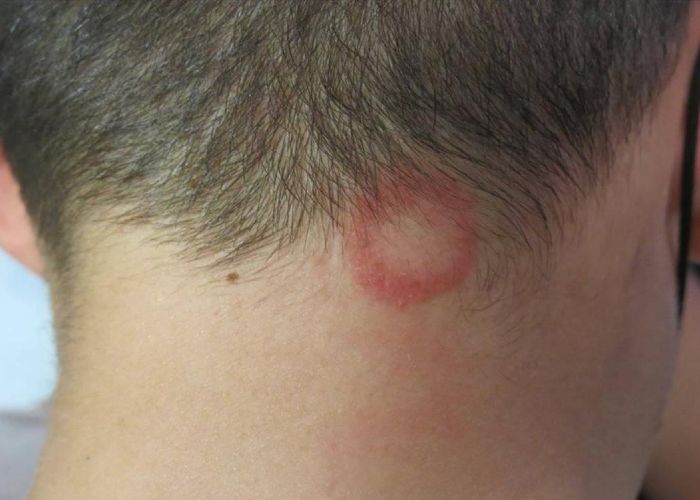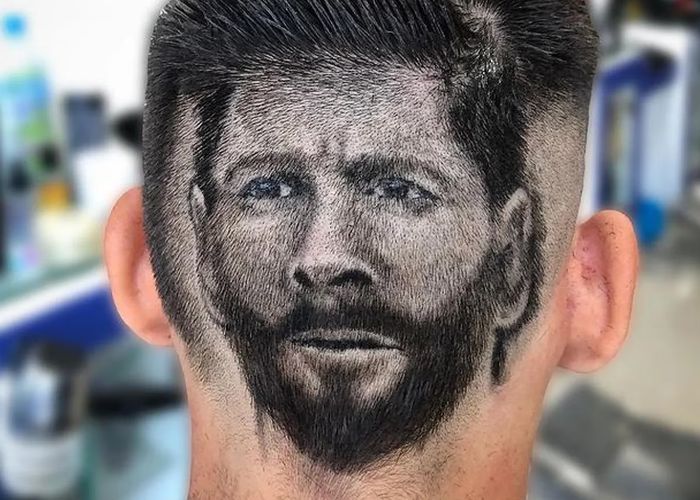
Men’s hairstyles have undergone a revolution in creativity and style in recent years, with fades and shaved hair advancing by leaps and bounds. Behind the trend’s bold, modern exterior, however, lurks a growing concern: ringworm.
Ringworm is a fungal infection that spreads from person to person through direct or indirect contact with contaminated objects.
“Tinea capitis is a skin infection of the scalp produced by a fungus called dermatophyte, which is transmitted by animals and from person to person. Currently, there is an increase in the number of patients who contract this infection, and we found that these people Often in barbershops and barbershops with very short hair and with clippers.” National University of Quilmes Scientific News AgencyMaría Jimena Martínez, Medical Specialist in Pediatric Dermatology.
recent, Argentinian Academy of Pediatrics issued a statement in which it highlighted that over the past two years there has been a substantial increase in cases of ringworm seen in children and adolescents whose hair has been cut by fading or shaving (often associated with the creation of decorative figures).

“This condition has also been reported in other countries and has been found to occur with higher frequency and to be associated with frequent (weekly or fortnightly) trips to the barber for shaving and ‘fashionable’ haircuts in children and adolescents, similar to athletes or Singer. International,” the statement said.
silent enemy
Tinea capitis is a highly contagious disease that mainly affects children aged 6 months to 12 years, with a slight predominance in males. Depending on the mode of transmission of the causative fungus, three types of dermatophytes can be distinguished:
- Affectionate, often causing a non-inflammatory clinical form
- Zoophilia, often causing inflammation
- Soil-loving, causes moderate inflammation. Manifestations of infection are erythema, scaling, alopecia or scaling, itching, pain, and discharge.

Along this line of thinking, identifying affected patients is crucial to limit contagion, which results from contact of fungal spores with the patient’s scalp and hair follicles. However, clinical diagnosis is not always easy, especially when it comes to discrete ringworm or ringworm that may be confused with other skin disorders.
“The increase in cases may be due to the sharing of contaminated shaving materials among hairdressers’ clients without considering adequate standards of disinfection after use,” Martinez said.
These fashion styles, which also have a huge following among sports icons such as Cristiano Ronaldo, Lionel Messi and Kylian Mbappé, require constant use of the motor . They feature shaved sides and a longer upper body for contrast. This cutting technique is a bottom-up shave that matches the areas where ringworm seems to be rampant: the nape and temporal area.

Ringworm can cause hair loss, which is cause for alarm. However, it should be noted that there are treatments available to combat this infection. In this sense, the dermatologist emphasizes: “Treatment is longer and oral antifungals must be used, that is, tablets must be taken, because the ointment does not reach the hair follicles sufficiently to fight the infection.”
better to take precautions
Martinez suggested that, first of all, once such an infection occurs, the hairdresser should be notified so that they can take appropriate hygiene measures and go back after being cured so that the infection does not continue to spread. “And then, in order not to get reinfected, you have to make sure that the places you go to are properly cleaning the elements they use for cutting and shaving; cutting elements like blades are discarded, and sanitizers or sanitizers are being used in hair clippers.”
Still, fads shouldn’t jeopardize your health, and in this case, taking preventive measures will not only prevent the spread of ringworm, but other potential infections as well. Beauty must go hand in hand with safety, and everyone from stylist to client is responsible for ensuring safety.
Annotation appears on the Scientific News Agency of the National University of Quilmes

